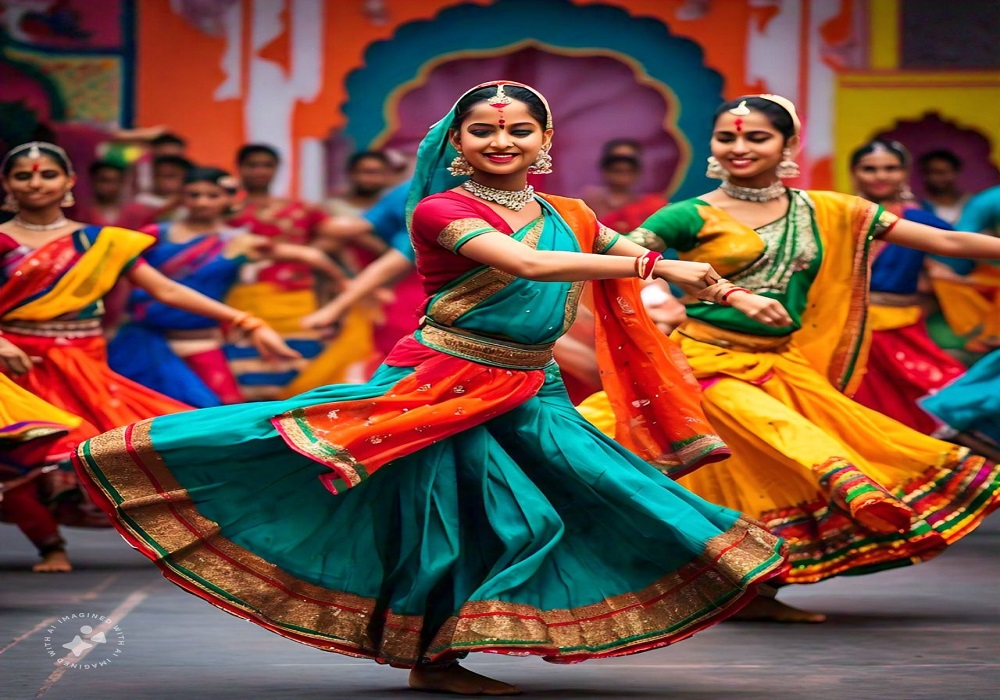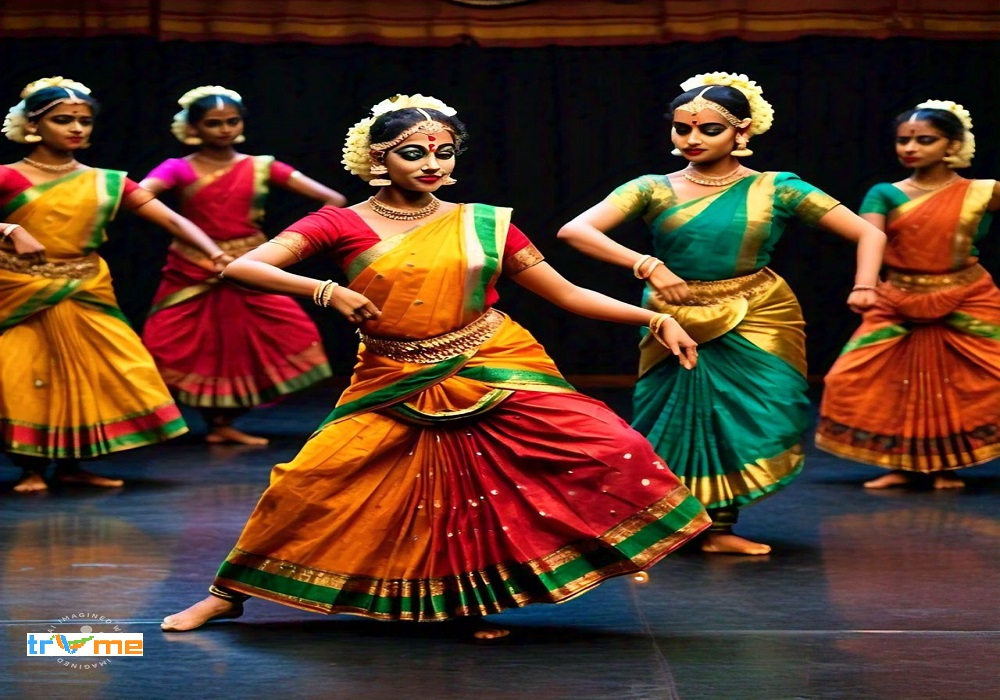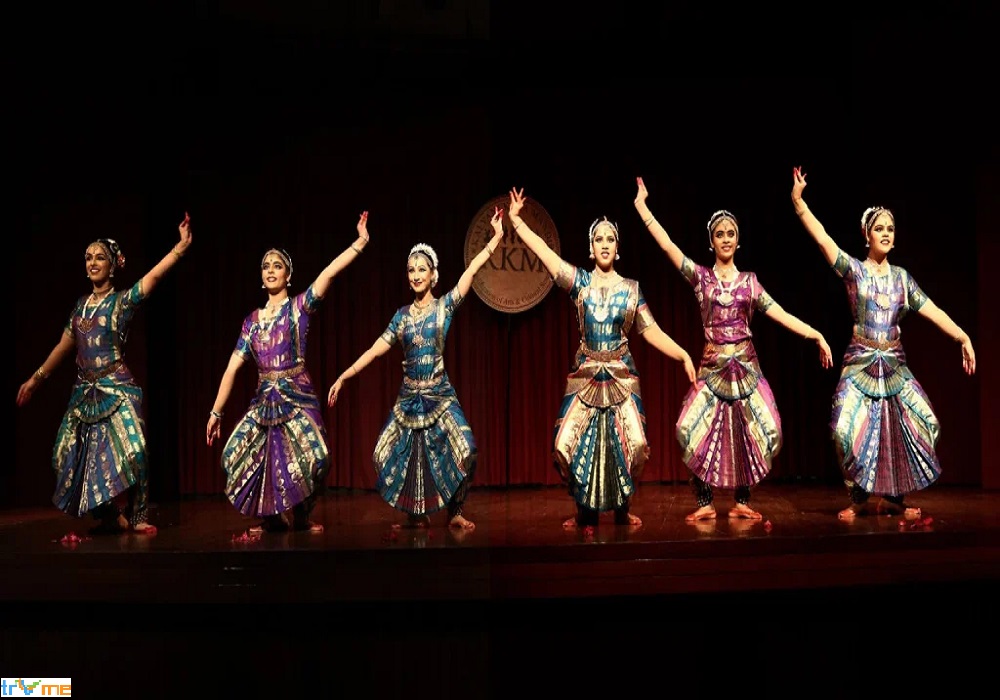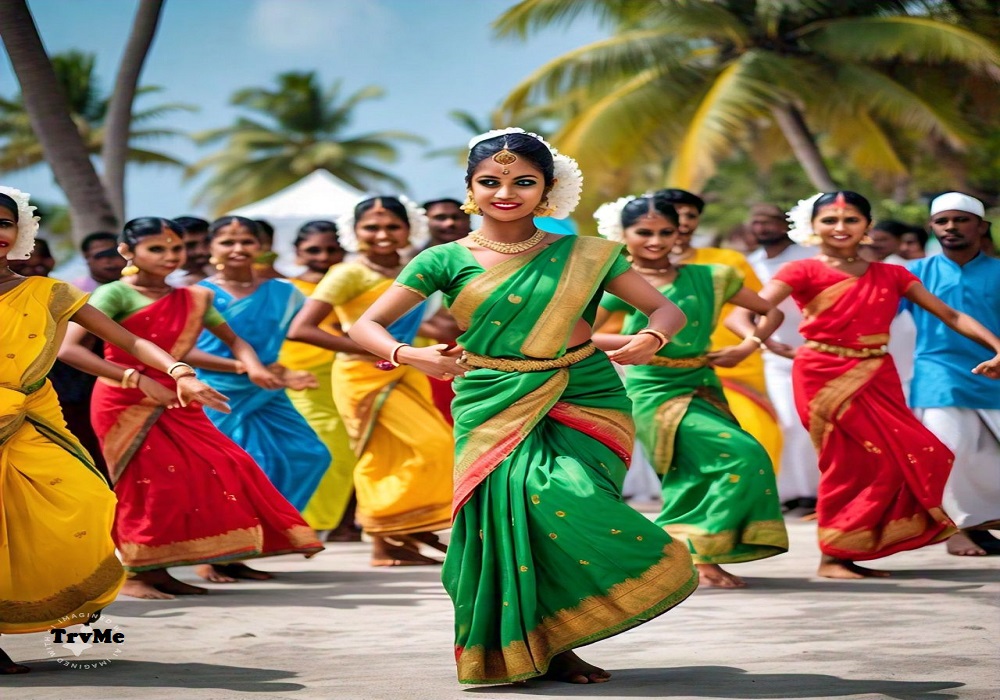Haryana folk dance Troupe

Published: 16 Aug 2024 • Last Updated: 16 Aug 2024
Haryana folk dance Troupe
The Vibrant Dance Troupe of Haryana: A Cultural Tapestry
Haryana, a state in northern India, is renowned for its rich cultural heritage, which is vividly expressed through its diverse dance forms. The state's dance traditions are a reflection of its history, festivals, and daily life, encompassing classical, folk, and tribal styles. This article delves into the myriad dance forms of Haryana, highlighting their origins, occasions, dress codes, props, and the role of various Haryana Dance Troupe Providers in preserving and promoting these vibrant traditions.
Classical Dance Forms of Haryana
While Haryana is more popularly known for its folk and tribal dance forms, classical dance forms have also found a place in the cultural landscape of the state. These dance forms, though not as widely practiced, contribute to the rich tapestry of Haryanvi culture.
1. Kathak
Kathak, one of the major classical dance forms of India, has roots in Haryana, particularly in the region of Mathura. This dance form is characterized by its intricate footwork, expressive gestures, and storytelling.
Occasion: Kathak performances are often held during cultural festivals, classical dance competitions, and formal gatherings.
Dress Code: Female dancers typically wear a traditional lehenga or sari, while male dancers opt for a dhoti and kurta. The attire is usually adorned with traditional jewelry and embellishments.
Props: Kathak performances incorporate bells (ghungroos) tied around the ankles, which produce rhythmic sounds that complement the dancer's movements.
2. Bharatnatyam
Though Bharatnatyam is traditionally associated with Tamil Nadu, it has gained popularity in Haryana through various dance institutes and troupes. This classical dance form is known for its graceful movements and elaborate expressions.
Occasion: Bharatnatyam performances are commonly seen in cultural festivals, classical dance recitals, and as part of thematic presentations in events.
Dress Code: Female dancers wear a traditional saree with a distinctive drape, often embellished with intricate designs. Male dancers typically wear a dhoti and a kurta.
Props: Props such as veils and jewelry are used to enhance the visual appeal of the dance.
Folk Dance Forms of Haryana
Folk dances are the heart and soul of Haryana's cultural heritage. These dances are typically performed during festivals, weddings, and community gatherings, reflecting the vibrant traditions and customs of the region.
1. Gidda
Gidda is a popular folk dance performed by women in Haryana. It is known for its lively and rhythmic movements, and is often accompanied by traditional music.
Occasion: Gidda is performed during festivals like Teej and Diwali, as well as at weddings and other celebrations.
Dress Code: Female dancers wear colorful salwar kameez or ghagras, often embellished with traditional embroidery and jewelry.
Props: Traditional props include earthen pots, which are sometimes used to create rhythmic beats or are held while dancing.
2. Bhangra
While Bhangra is more commonly associated with Punjab, it has found a place in Haryana's cultural scene, particularly in border areas where cultural exchanges are frequent. This high-energy dance form involves vigorous movements and jumps.
Occasion: Bhangra is performed during harvest festivals like Baisakhi, as well as at weddings and other celebratory events.
Dress Code: Male dancers wear colorful kurtas, lungis, and turbans. Women, although less common in Bhangra performances, typically wear vibrant suits and dupattas.
Props: Bhangra performances often feature props such as sticks (lathis) and traditional farming tools.
3. Khoria
Khoria is a traditional folk dance of Haryana performed by both men and women. It is characterized by its rhythmic and coordinated movements.
Occasion: This dance is usually performed during weddings and local festivals.
Dress Code: Dancers wear traditional Haryanvi attire, including colorful dhotis for men and ghagras for women.
Props: Khoria performances may include props like sticks or cloth pieces that are used to enhance the dance's rhythm and coordination.
4. Dhamal
Dhamal is a traditional dance performed by men, known for its energetic and vigorous movements. It is a community dance that involves the entire village.
Occasion: Dhamal is typically performed during religious festivals and community celebrations.
Dress Code: Men wear traditional dhotis and kurtas, often in bright colors.
Props: Dhamal performances do not typically involve props, focusing instead on the energetic dance movements and drum beats.
5. Jhumar
Jhumar is a popular folk dance performed primarily by the men of Haryana. It is characterized by its graceful movements and rhythmic beats.
Occasion: Jhumar is performed during harvest festivals and other local celebrations.
Dress Code: Male dancers wear traditional attire, including dhotis and kurtas.
Props: The dance is usually performed with minimal props, focusing on the dancer's movements and the rhythm of the accompanying music.
Tribal Dance Forms of Haryana
The tribal dance forms of Haryana reflect the state's ancient traditions and the lifestyles of its indigenous communities. These dances are an integral part of various tribal ceremonies and festivals.
1. Sahariya Dance
The Sahariya Dance is performed by the Sahariya tribe, known for its distinctive and rhythmic movements.
Occasion: This dance is typically performed during tribal festivals and community gatherings.
Dress Code: Dancers wear traditional tribal attire, often made from locally available materials.
Props: Minimal props are used, with the focus being on traditional beats and the dance movements.
2. Jatu Dance
Jatu Dance is a traditional dance performed by the Jatu tribe of Haryana. It is known for its energetic and vibrant movements.
Occasion: Jatu Dance is performed during tribal festivals and important community events.
Dress Code: Dancers wear colorful and traditional tribal costumes.
Props: The dance may include traditional musical instruments and sometimes small hand-held props.
3. Jangra Dance
Jangra Dance is a traditional dance of the Jangra tribe, characterized by its lively and rhythmic movements.
Occasion: This dance is performed during major tribal festivals and cultural events.
Dress Code: Traditional tribal attire is worn, featuring bright colors and elaborate patterns.
Props: The dance incorporates traditional instruments and sometimes decorative items.
The Role of Haryana Dance Troupe Providers
Haryana Dance Troupe Providers play a crucial role in preserving and promoting the rich dance traditions of the state. These organizations and groups are dedicated to showcasing the diverse dance forms of Haryana and ensuring that these cultural practices are passed down to future generations.
1. Promoting Cultural Heritage
Haryana Dance Troupe Providers are instrumental in organizing performances and cultural events that highlight the traditional dance forms of the state. By showcasing these dances at festivals, cultural fairs, and community gatherings, they help in keeping the rich heritage of Haryana alive.
2. Training and Education
Many Haryana Dance Troupe Providers operate dance institutes that offer training in various dance forms. These institutions play a vital role in educating the younger generation about traditional and classical dance forms, ensuring that the skills and knowledge are preserved.
3. Organizing Festivals and Events
Dance groups and providers organize festivals and events that celebrate the diverse dance forms of Haryana. These events provide a platform for dancers to perform and share their art with a wider audience, promoting cultural exchange and appreciation.
4. Collaborations and Innovations
Haryana Dance Troupe Providers often collaborate with other cultural organizations and dance groups to innovate and adapt traditional dance forms for modern audiences. This helps in keeping the dances relevant and engaging while respecting their traditional roots.
Haryana Dance Institutes: Nurturing Talent and Tradition
Haryana Dance Institutes play a pivotal role in nurturing talent and preserving the traditional dance forms of the state. These institutes offer structured training programs, workshops, and performances that contribute to the cultural enrichment of the region.
1. Training Programs
Dance institutes in Haryana offer a variety of training programs in classical, folk, and tribal dance forms. These programs are designed to provide students with a deep understanding of dance techniques, history, and cultural significance.
2. Workshops and Seminars
Institutes frequently organize workshops and seminars that focus on different aspects of dance, including choreography, performance skills, and the use of traditional props. These events provide valuable learning opportunities for both aspiring dancers and seasoned performers.
3. Performances and Showcases
Haryana Dance Institutes often organize performances and showcases to provide students with opportunities to demonstrate their skills. These events are an important aspect of the training process, helping students gain practical experience and build confidence.
4. Cultural Exchange
Dance institutes also facilitate cultural exchange programs, where students and performers have the chance to interact with dancers from other regions and countries. This fosters a greater understanding and appreciation of diverse dance traditions.
Haryana's dance traditions are a vibrant and integral part of its cultural heritage, encompassing a wide range of classical, folk, and tribal forms. Each dance form, with its unique style, attire, and props, reflects the rich history and diverse traditions of the state. Haryana Dance Troupe Providers and dance institutes play a crucial role in preserving and promoting these dance forms, ensuring that the cultural legacy of Haryana continues to thrive.
From the graceful movements of Kathak to the energetic beats of Bhangra, and from the traditional Sahariya Dance to the colorful Jhumar, Haryana's dance forms offer a captivating glimpse into the state's cultural soul. As these traditions are passed down through generations, they continue to inspire and enchant audiences, celebrating the vibrant spirit of Haryana.



